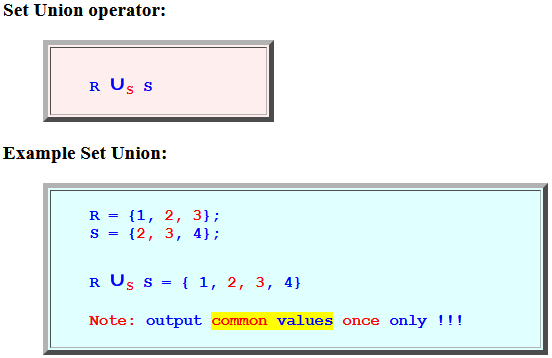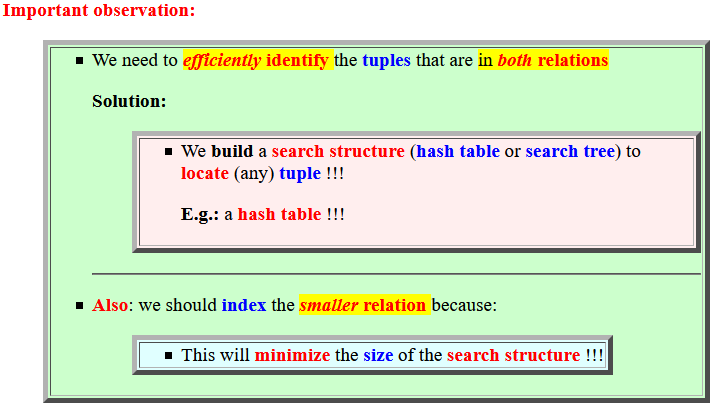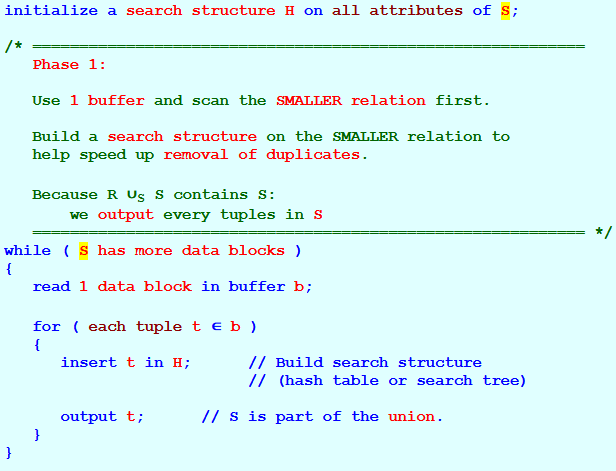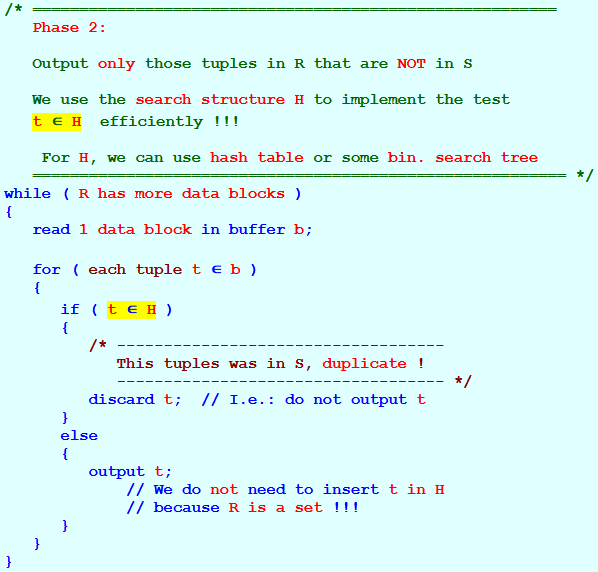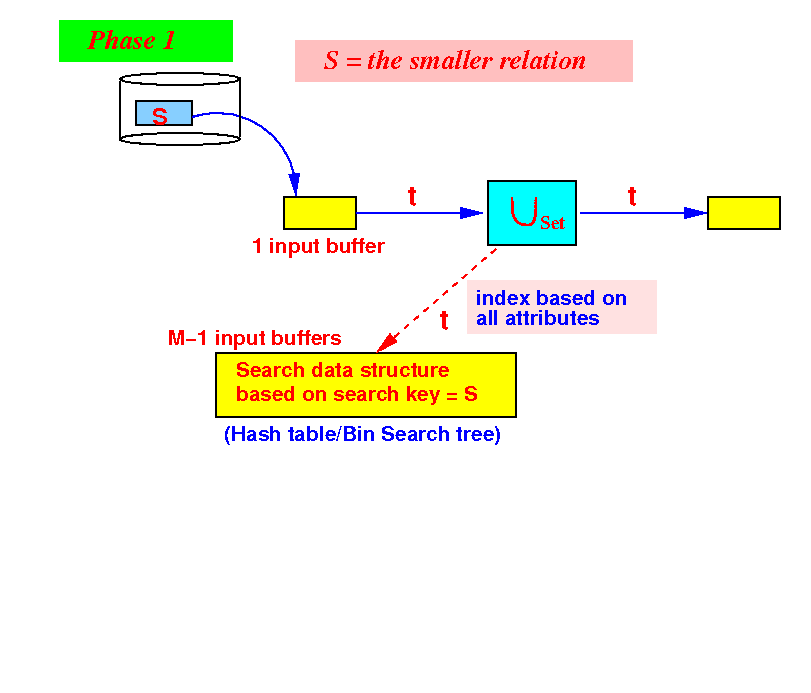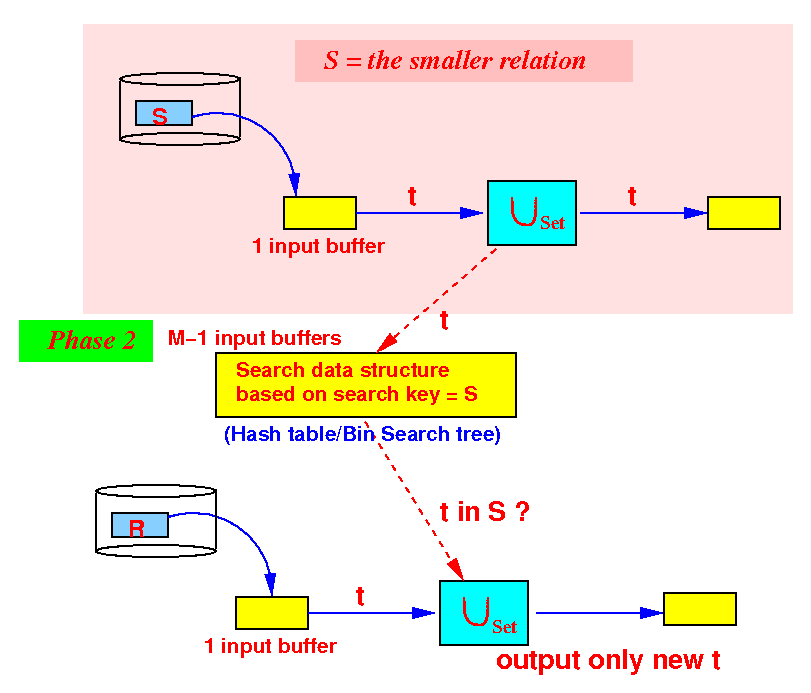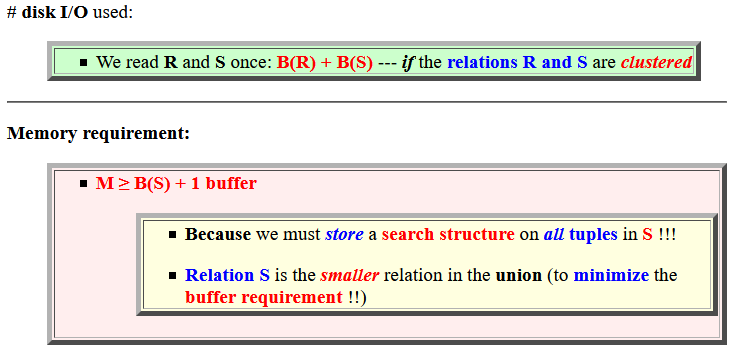Slideshow:
- Set Union operator:
R ∪S S - Example Set Union:
R = {1, 2, 3}; S = {2, 3, 4}; R ∪S S = { 1, 2, 3, 4} Note: output common values once only !!!Important observation:
- We need to
efficiently identify
the tuples that
are
in both relations
Solution:
- We build
a search structure
(hash table or
search tree) to
locate (any)
tuple !!!
E.g.: a hash table !!!
- We build
a search structure
(hash table or
search tree) to
locate (any)
tuple !!!
- Also:
we should index the
smaller relation
because:
- This will minimize the size of the search structure !!!
- We need to
efficiently identify
the tuples that
are
in both relations
- One-pass algorithm:
Assumption:
- The input relations
are
sets....
I.e.:
- No duplicates in the input !!!
- The output must
be a
set !!!
I.e.:
- No duplicates in the output !!!
- The relation S is
the
smaller relation
- Building a search structure using S will minimize the memory requirement
Algorithm:
initialize a search structure H on all attributes of S; /* =========================================================== Phase 1: Use 1 buffer and scan the SMALLER relation first. Build a search structure on the SMALLER relation to help speed up removal of duplicates. Because R ∪S S contains S: we output every tuples in S =========================================================== */ while ( S has more data blocks ) { read 1 data block in buffer b; for ( each tuple t ∈ b ) { insert t in H; // Build search structure // (hash table or search tree) output t; // S is part of the union. } } /* ======================================================== Phase 2: Output only those tuples in R that are NOT in S We use the search structure H to implement the test t ∈ H efficiently !!! For H, we can use hash table or some bin. search tree ========================================================= */ while ( R has more data blocks ) { read 1 data block in buffer b; for ( each tuple t ∈ b ) { if ( t ∈ H ) { /* ----------------------------------- This tuples was in S, duplicate ! ----------------------------------- */ discard t; // I.e.: do not output t } else { output t; // We do not need to insert t in H // because R is a set !!! } } }
Buffer utilization when there are M buffers available:
- Phase 1:
partition the M buffers as
follows:
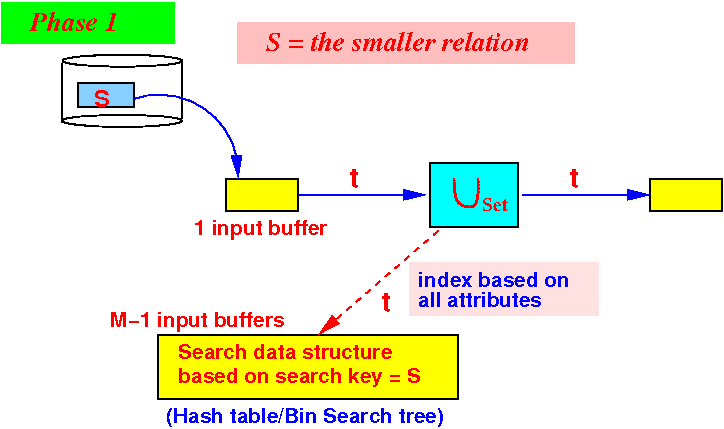
Use 1 buffer for input from S
Use M−1 buffers for the search structure
- Phase 2:
partition the M buffers as
follows:

Use 1 buffer for input from R
We are still using M−1 buffers for the search structure in phase 2
- The input relations
are
sets....
- # disk I/O used:
- We read R and S once: B(R) + B(S) --- if the relations R and S are clustered
- Memory requirement:
- M ≥ B(S) + 1 buffer
- Because we must
store a
search structure on
all tuples in
S !!!
- Relation S is the smaller relation in the union (to minimize the buffer requirement !!)
- Because we must
store a
search structure on
all tuples in
S !!!
- M ≥ B(S) + 1 buffer
